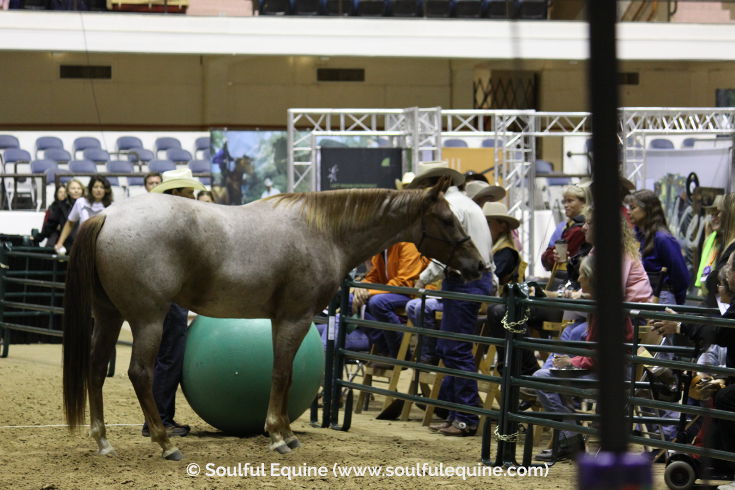
Ransom Performs at a Texas Parelli Event in 2009
In an article I published called Natural Hoof Care For A Healthy Hoof – Six Ways To Read Horses’ Hooves I listed some general guidelines you can use to identify healthy hooves in domesticated horses.
It is important to understand that there are no hard and fast rules and that most any rule has an exception …especially when it comes to an animal such as the horse who has survived for millions of years.
One of the most important lessons to take away from this series on identifying a healthy hoof is that there is more than one wild horse model. Hoof Form is all about adaptation and it can vary significantly from biome to biome.
My Horse Show Experiment
Just for fun I went to a local open horse show. I thought it would be a great opportunity for me to take pictures of some horse’s hooves for this article. At this particular show there was a variety of common everyday horse owners present. The horse hooves I saw at the show were a pretty good example of what the average, if not the majority of, horse’s hooves may look like in domestication.
I was happy to find many barefoot horses although after talking with the owners, I could tell that they knew nothing about natural hoof care. Every barefoot horse I saw there was very overgrown and could really use a trim. It was so hard for me because I wanted to pull my tools out of the truck and go to town. 🙂
Each barefoot horse I saw appeared to be pretty sound… although, I did not get a chance to really watch them move.
The shod horses I saw, and the ones I was able to get pictures of, were pretty typical of most shod horses. I saw severely contracted heals, high heals, long toes / underrun heals (forward foot syndrome), etc. I saw several that I knew it was just a matter of time before they would come up lame. I will show you three of those shod horses in this article.
Shod Horse Hooves
Shod Horse Example #1
This horse has the typical forward foot syndrome – a long toe & underrun heal.
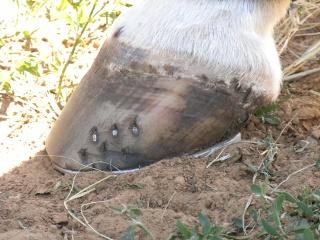
Shod Horse Example #2
This horse is walking around like a woman in high-heeled shoes. Actually, this poor horse has a pretty severe club foot and yes, the owner was riding and showing her. This horse also had severely contracted heals. How would you feel?
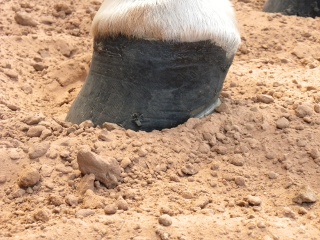
Shod Horse Example #3
This is another example of the typical forward foot syndrome – a long toe & underrun heal. It amazes me how this horse was even getting around.
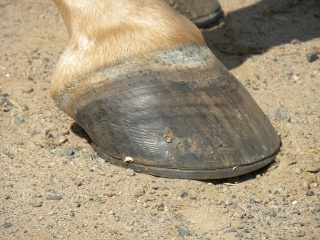
Barefoot Horse Hooves
Barefoot Horse Example #1
This barefoot horse is actually not too bad, comparatively. However, notice the ripples / event rings in his hoof wall. This is something that should not be present in a healthy well balanced hoof. The owner said that this horse is not routinely trimmed by a hoof care professional. He pretty much maintains himself through the amount of movement he gets.
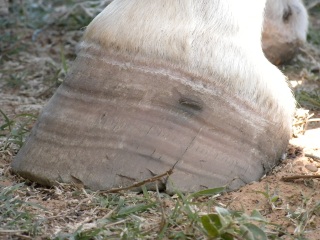
Barefoot Horse Example #2
This is a picture of an 18 year old mare who had recently foaled and was just getting back into some light showing. The owner said that she had not been shod in 10 years and her last trim was about 6 weeks prior to when this picture was taken.
She actually does not look too bad but this is another example of prominent “event rings” in the hoof wall. She also has somewhat of an underrun heal.
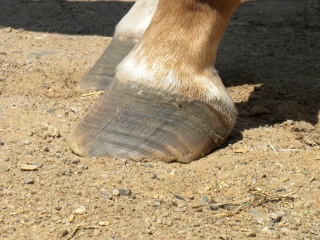
Barefoot Horse Example #3
This is a picture of a three year old horse who had never been shod (if I remember correctly). His hooves do not look too bad but this is another example of a horse that has “event rings” in his hoof wall.
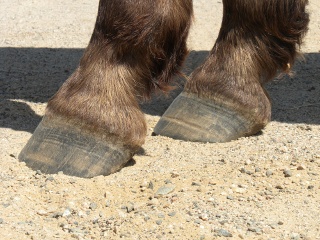
Healthy Hoof Examples
This is a healthy hoof from my previous article Natural Hoof Care For A Healthy Hoof – Six Ways To Read Horses’ Hooves and is from one of my personal horses one week after a maintenance trim.
NOTE: This picture was taken taken during a time between the wet months of spring and the more dry months of the year. This horse lives on dry, flat, hard ground and routinely stands on hard flat rubber mats when he nibbles on hay or when getting out of the elements. Changes of season and terrain are some of the ingredients that will determine hoof form.
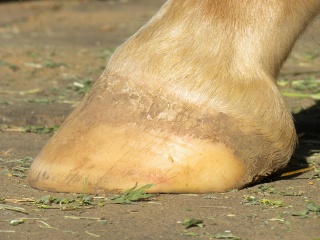
This is a picture of a wild horse’s hooves from the Western United States.
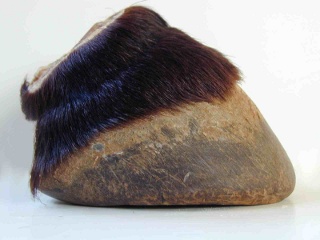
Summary
I hope this helps you on your journey to becoming more aware of healthy hoof form. Awareness is the first step to causing change.
Please leave your thoughts or feedback in the comments section of this article. If you have any questions, feel free to ask and I will do my best to help you where I can.
Keep it soulful,
Stephanie Krahl
###
Photo Credits:
- Main article photo – This is a picture of one of my personal horses that I trim. His name is Ransom, a 4 year old Quarter Horse Gelding. He has been barefoot all his life and raised on a paddock paradise track system on my property since he was one year of age. The white hoof under the “healthy hoof” section is a picture of his left hind hoof.
- Wild Horse Hooves Photo Credit – Permission Granted by Cindy “Hawk” Sullivan from Tribe Equus.
Recommended Reading
For learning more about a healthy barefoot horse, I would recommend going to our Amazon Store where I hand selected books for continued education: Soulful Equine’s Recommended Books
